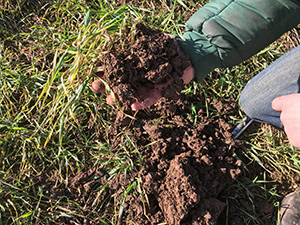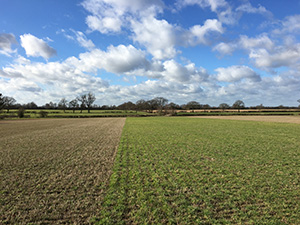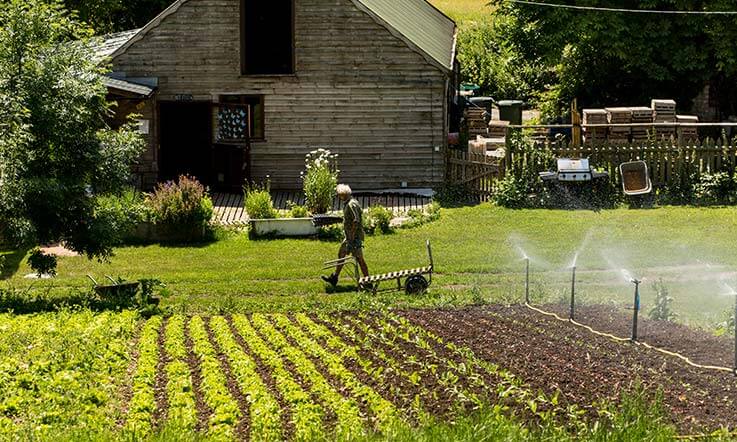Half a day with Soil Farmer of the Year winner Simon Cowell last week showed me a level of understanding of soil and its management that is rare amongst organic farmers, let alone conventional.


For the past 20 years Simon has developed a soil management regime focused on soil health; maintaining good soil structure and enhancing soil biological activity to improve the availability of soil nutrients and minimising the use of fertilisers and agro-chemicals.
Motivated by a recognition that on his 160 hectares of very heavy Essex clay soils nutrient reserves are ample and that what he needed to do was improve their availability to plants, he has developed a system that is completely at odds with his conventional farming neighbours. The farm is principally an arable operation with no livestock, growing wheat, beans, linseed and occasionally some other crops. The key things that he has done are:
Key to managing the system is good information on soil and plant tissue. With spade in hand and a keen sense of smell Simon is routinely undertaking soil analysis, using a method similar to the Albrecht/Base Cation Saturation Ratio analysis. This shows phosphate reserves as well as available levels, organic matter, pH, Cation Exchange Capacity and a range of trace elements. He is more interested in what it tells him about change over time rather than fertiliser inputs. Particularly important is that he is monitoring root mycorrhizae populations: they are generally double what would normally be expected in these crops. If they are not then he addresses soil structure or applies compost. Despite no use of P and K fertilisers for 20 years and soil analysis showing very low levels of available P and K, the regular plant tissue analysis indicates that there are no crop deficiencies.
This change in management has resulted in exceptional soil structure, very high earthworm populations, minimal use of herbicides and pesticides, no growth regulators or seed dressings, manageable black grass levels and reasonable yields by conventional standards. This with much lower levels of nitrogen fertiliser; he has reduced his nitrogen fertiliser application rates on wheat down to 180kgs of N/ha from the 250 which is the RB209 recommended rate for these soils. The soil organic matter at 5 -6%, excellent structure and water infiltration is visibly much better than his neighbours.
New ideas being explored include use of high rates of foliar fertiliser application (not effective) and mycorrhizae inoculation. My view is that he has opportunity for much more regular use of cover crops in order to return high levels of green materials to feed soil organisms. Ironically Roundup is both the Achilles heal and the mainstay of the system; Glyphosate is immensely damaging to mycorrhizae and yet it is essential for direct drilling. It is the one thing that stops him from farming organically – don’t believe everything that you read about the Rodale no-till crimper system replacing the plough.
There are many lessons for organic farmers, they include the value of regular monitoring of soil mycorrhizae and plant tissue nutrient levels, the potential benefits of minimising tillage and Simon’s example reinforces the idea that well-made compost, even at low levels, encourages soil biological activity. The current nutrient target ‘best practice’ for organic farming of aiming for one index lower than conventional could perhaps be revised downwards in situations where there is evidence of high levels of mycorrhizae.
